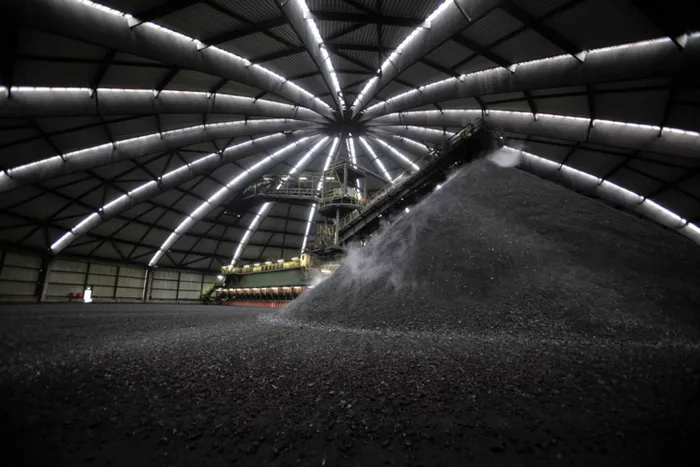Cost of carbon capture ‘seriously underestimated’

FLAWED STUDIES: Coal is mixed in a coal mix hall at the Prosper II mine in Bottrop, Germany. A handful of nations are developing plans to trap and seal beyond reach, the greenhouse gas carbon dioxide produced from burning fossil fuels in power plants. The technology, called carbon capture and storage (CCS), may help create more energy for less carbon dioxide. The idea is that companies build coal-fired power plants and bolt on CCS technology later. Picture: REUTERS FLAWED STUDIES: Coal is mixed in a coal mix hall at the Prosper II mine in Bottrop, Germany. A handful of nations are developing plans to trap and seal beyond reach, the greenhouse gas carbon dioxide produced from burning fossil fuels in power plants. The technology, called carbon capture and storage (CCS), may help create more energy for less carbon dioxide. The idea is that companies build coal-fired power plants and bolt on CCS technology later. Picture: REUTERS
Environment Writer
CARBON capture and storage has long been punted as a way for the world to continue burning coal to generate electricity while cutting greenhouse gas emissions.
But a University of Michigan study, released recently, has found that most economic analyses of carbon capture and storage technology (CCS) seriously underestimate the cost of this technique and over-estimate the energy efficiency of CCS.
Carbon capture involves sucking carbon dioxide out of coal-fired power plants’ flue gases, compressing it and injecting it deep underground.
Researchers said their new analysis put the cost of reducing carbon emissions through CCS higher than any previous study. Steve Skerlos, professor of engineering at the university, said they had concluded that renewables would be a cheaper alternative. “To us this means policymakers need to stop wasting time hoping for technological silver bullets to sustain the status quo in the electricity sector and quickly accelerate the transition from coal to renewables, or possibly, natural gas power plants with CCS.”
Nearly one-third of the world’s electricity is produced by coal-fired power plants, which emit more than half of the world’s energy-sector carbon dioxide, the main driver of climate change.
Skerlos said every major technological, economic and policy study published in the last decade on how to meet the internationally determined target of 80 percent greenhouse gas reduction by 2050 had relied on the large-scale deployment of carbon capture and storage.
He quotes the International Panel on Climate Change’s reports from 2005 and 2012 which suggest carbon capture could enable between 10 percent and 55 percent of the US’s total carbon reduction by 2100. And this year, a study published in the Proceedings of the National Academy of Sciences, projected that nearly 85 percent of emissions reductions by 2050 could come from carbon capture and storage.
Lead author of the study, Sarang Supekar, said these reports, and many like them, had failed to capture the full picture. Current projections, which were flawed, put the fuel costs of a CCS-equipped coal plan at $29 million (R416m) a year more than a conventional plant. However, the new study calculated the extra fuel cost at closer to $126m.
The reason for the discrepancy is that the flawed studies relied on numbers from a 1991 pilot study that had failed to account completely for “feedback effects”.
This refers to the increased amount of coal that needs to be burnt to generate the energy to capture the CO2. Researchers used data from CCS pilot projects that were already operating, and quantified what they were experiencing.
“The online conclusion is that coal should stay in the ground. It is not efficient to take it out, burn it, put it back. Renewables, and possibly natural gas power plants with CCS technology, will be much cheaper and more efficient.”